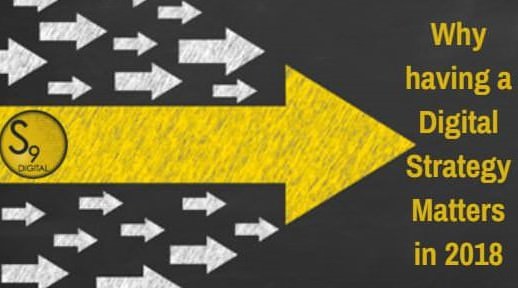One of the most common questions that I get asked by clients is, “What is the best way to build our companies digital sales funnel?” Unfortunately, the question is impossible to answer! However, many customers believe there is a magical technique we can provide that will turn someone who has never heard of their business into a paying customer. If it was that easy, I would not be writing this article :-).
Even if you spend thousands of dollars to drive qualified traffic to your website, it’s unlikely that these visitors will be ready to buy your product or service immediately. Rather than looking for the one marketing technique that will get you paying customers, instead think about how your combined marketing and sales efforts can work together to put your prospects on the right path. Building a digital sales funnel can help you accomplish just that.
What is a digital sales funnel?
Simply put, a digital sales funnel illustrates the ideal online journey that your prospects go through on their way to becoming customers. While you may market your products or services to thousands of people, only a small percentage will provide contact information and become leads. Of those leads, only a fraction will actually become customers. See the illustration below:
By now you might have guessed why it’s called a sales funnel, right? You have to funnel prospects down in order to get that amazing new prospect into a paying client. To break this down even further, let’s separate the funnel into four (4) stages.
Know: Marketing and advertising which bring visitors to your website who are looking for information. During this time you should be focused on creating brand awareness.
Like: This is the stage where visitors are comparing and the opportune time to provide an offer that will inspire visitors to share their contact information.
Trust: Vistors know who you are, like your brand, and are ready to take action because you have gained their trust.
Close: Once a lead is a customer, delivering quality service keeps your customers happy, inspires referrals, and builds long-term relationships.
Moving through the ‘ideal scenario’
To illustrate this process, let’s assume that you’re looking for an online music subscription service.
Know
You head over to Google and search “streaming music.” In the search results, you see “Pandora – Listen to Free Music You’ll Love.” so you click on the link and get directed to the Pandora homepage.
Like
You scan through the homepage and notice the big blue section that says “Start listening for free.” You enter your artist, song, or genre to create a station. Before you know it, you’re enjoying your favorite tunes on Pandora.
Trust
A couple of days later, you receive an email from Pandora which describes the benefits of Pandora Premium (no ads, offline listening, higher quality audio, etc.). The free service has been great, but the ads are a bit annoying so you enter your credit card details and subscribe to the premium account.
Close
You enjoy Pandora so much that you tell your friends about it and encourage them to create free accounts. You effectively become a promoter of the service and you continue to engage with other subscribers through shared playlists on social media.
Brand awareness leads to conversion
In this example, Pandora attracted you to their service through a mix of SEO and brand recognition. Their offer for a free Pandora subscription converted you from an anonymous website visitor into a lead and the email helped close the deal. But it didn’t stop there. The high quality of service and social sharing options inspired you to refer friends so the cycle could continue.
The reason I call this the ‘ideal scenario‘ is that it assumes that you found Pandora from your Google search for “streaming music.” In reality, Pandora worked to attract you to their service through YouTube ads, social media advertising, and other marketing channels. After all these efforts, the Google search was just the last piece that pushed you over the edge.
While your company is likely very different than Pandora, the principles remain the same. You need to do all you can to attract visitors so they KNOW your company through brand awareness. Visitors become leads when they LIKE, then TRUST your brand, which in turn allows you to CLOSE the deal. Don’t forget, high quality is critical to ensure customers promote your products or services, continuing the sales cycle.
Tips for improving your digital sales funnel
- Use multiple marketing channels to attract visitors. Our most successful clients are using multiple marketing channels including pay-per-click (PPC) advertising, organic SEO, email campaigns, and cold calling. Your specific channels may differ depending on your industry, but it’s best to not put all your eggs in one basket.
- Analyze the effectiveness of your marketing campaigns. In order to learn what marketing channels are most effective, analyze your website traffic and inbound leads. This data will help you make educated decisions so you aren’t throwing spaghetti against the wall and hoping that it sticks (sorry for the spaghetti reference, I’m Italian and hungry!)
- Add new blog content to your website on a regular basis. Content is vital and a blog is a great place to organize all of your great content. Writing useful blog posts can improve your SEO, and help you engage with your current clients, which builds TRUST.
- Listen to your prospects and customers, then adapt your website accordingly. If your clients and prospects are asking questions related to your products or services, consider answering the question in a blog post. Chances are that others have similar questions and adding the answers to your site may attract new visitors. Exactly what we are doing by writing this article :-).
- Include more than one call to action (CTA) on your website. Chances are that your website visitors will be at different stages of the customer journey. Some might be ready to call or email while others might be researching. Make sure to include offers like free eBooks, whitepapers, or in our case a FREE SEO Audit Tool. This will capture names and email addresses for those who aren’t quite ready to talk to your sales team.
 Re-target website visitors who don’t convert the first time. You won’t be able to capture lead information for all of your website visitors. This doesn’t mean you should give up on the visitors who don’t convert. Consider running an AdWords retargeting campaign so you can display advertisements on popular websites which will display only to people who visited your website. This will give you another chance to draw them back in.
Re-target website visitors who don’t convert the first time. You won’t be able to capture lead information for all of your website visitors. This doesn’t mean you should give up on the visitors who don’t convert. Consider running an AdWords retargeting campaign so you can display advertisements on popular websites which will display only to people who visited your website. This will give you another chance to draw them back in.- Become an authority in your industry and/or region. If you’re known far and wide for being an industry expert, you’ll have prospects seeking you out rather than the other way around. Consider planning lunch and learn sessions or organizing webinars on a regular basis. As your brand recognition grows, you may even attract inbound links to your site which will benefit your organic SEO ranking.
- Nurture your prospects. Don’t give up on your leads. If they provided their email or phone number, it’s likely that they have interest in your products or services. However, you may have to nurture them by sending monthly email newsletters, targeted email broadcasts, or email drip campaigns. Follow-up is the key to success!
- Add an incentive to your referral program. If you have a referral program, make sure you’re promoting it to your clients. Make sure to remind them in your email newsletter or email signature.
- Take action now! The first step to improving your digital sales funnel and marketing efforts is to take action. If you delay it until next month or next quarter, it likely won’t get started until next year. You don’t have to take on everything at once. Start by creating a game plan with specific due dates to ensure you can start making progress. Most of our clients are not ready to implement all phases of the digital marketing puzzle at once. Start off small, then build from there.
Taking action
A good first step is to simply write down all your current marketing efforts on a sheet of paper. Then categorize them into the four (4) categories of the digital sales funnel we covered (know, like, trust, close). Once you have everything mapped out, see if you can spot the gaps. Once you’ve identified areas for improvements, list them out in order of priority.
Take it one step further and break your marketing improvements down into stages. Perhaps your first stage of improvements is to optimize your lead conversion on your website or landing page. You can accomplish this by offering a free eBook or free consultation to your site visitors. Once you feel confident that you can capture lead information, you might be ready to invest in additional marketing efforts and add visitors to your digital sales funnel.
Of course, if you’re an S9 Digital client, we’re always here to help you along the way. You have a full team with over 20 years experience at your disposal, which can help implement each phase of the digital marketing puzzle. We take a holistic approach to your marketing efforts with digital solutions that transform your brand, taking you to the next level.
Please don’t forget to share our article below… Thank you!











You must be logged in to post a comment.